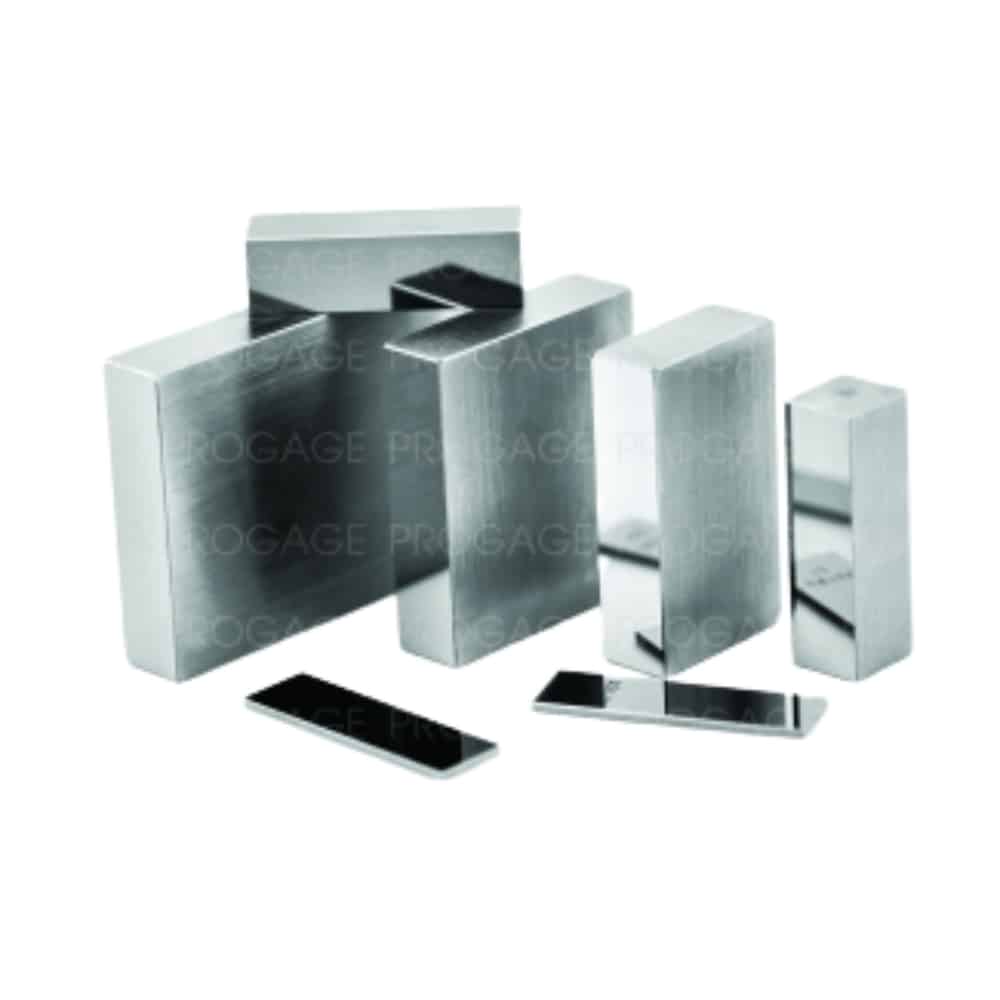Block Gauge Loose Type BGL001
Block Gauge Loose Type BGL001
Feature
A block gauge (also known as a slip gauge or joe block) is a standard for measuring precision ground length. Use as a reference for calibrating precision measuring equipment used in machine shops, such as micrometers, sine bars, calipers, and dial indicators. (tool used for inspection) and remains the main method of length standardization used by current industry
***Organized in a box set
Block gauges come in blocks of various lengths. Complete with two wear blocks to allow for assembly. Can be a variety of standard lengths by stacking Each gauge block is essentially a block of metal or ceramic with two precisely opposed, flat and parallel faces. precise distance Standard grade blocks are made from hardened alloy steel. While our calibration grade blocks are usually made from tungsten carbide. which is a tougher alloy This makes these blocks harder and more resistant to wear and tear over time.
On operation, the selected block is removed from the set. Clean the protective coating. (petroleum jelly or oil) and twist (1) together. It is advisable to use the minimum number of blocks to create a stack of the desired size.
Wear blocks, which are made from harder substances such as tungsten carbide. are included at each end of the stack. When possible To protect the gauge block from being damaged or deteriorated when in use.
Please note that the gauge block is calibrated to a maximum accuracy of approximately 20 °C and should be kept at this temperature when measuring. This reduces the effects of thermal expansion. Additionally, the actual length of each block then slightly shorter than the stamped length (microns) This is because the stamped length includes the length of one twisted film. This is a film of lubricant that separates adjacent block faces in normal use.

Twisting is the process of sliding two blocks together so that their faces slightly meet.
The twisting process consists of four steps.
Wipe clean gauge block onto oiled pad.
Wipe off excess oil from the gauge block using a dry pad.
The block is then slid perpendicularly across another block while applying moderate pressure until it forms a cross.
Finally, the block is rotated until it is aligned with the other blocks.
After use The block is then again oiled or greased to prevent corrosion.



